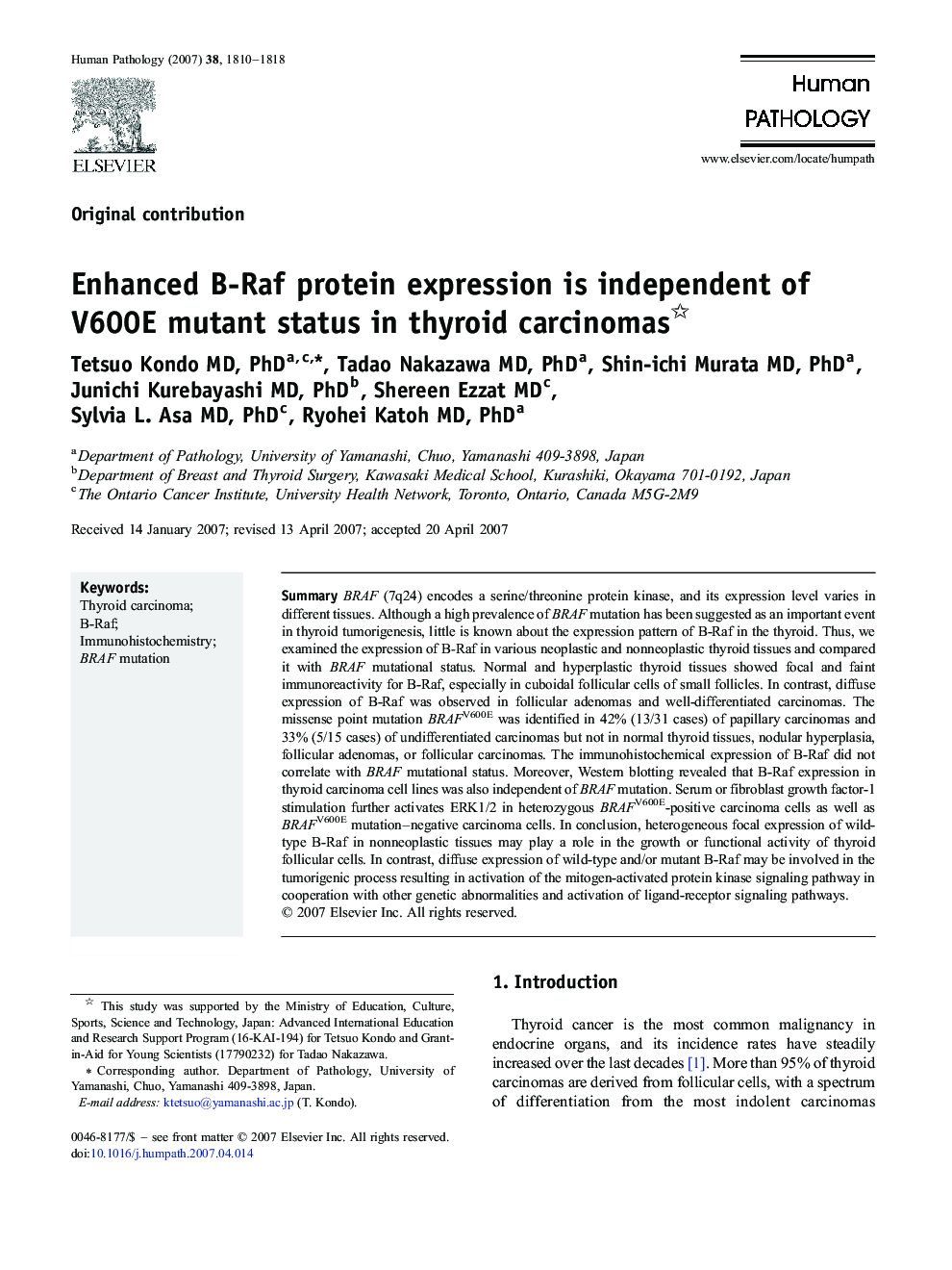| Article ID | Journal | Published Year | Pages | File Type |
|---|---|---|---|---|
| 4135515 | Human Pathology | 2007 | 9 Pages |
SummaryBRAF (7q24) encodes a serine/threonine protein kinase, and its expression level varies in different tissues. Although a high prevalence of BRAF mutation has been suggested as an important event in thyroid tumorigenesis, little is known about the expression pattern of B-Raf in the thyroid. Thus, we examined the expression of B-Raf in various neoplastic and nonneoplastic thyroid tissues and compared it with BRAF mutational status. Normal and hyperplastic thyroid tissues showed focal and faint immunoreactivity for B-Raf, especially in cuboidal follicular cells of small follicles. In contrast, diffuse expression of B-Raf was observed in follicular adenomas and well-differentiated carcinomas. The missense point mutation BRAFV600E was identified in 42% (13/31 cases) of papillary carcinomas and 33% (5/15 cases) of undifferentiated carcinomas but not in normal thyroid tissues, nodular hyperplasia, follicular adenomas, or follicular carcinomas. The immunohistochemical expression of B-Raf did not correlate with BRAF mutational status. Moreover, Western blotting revealed that B-Raf expression in thyroid carcinoma cell lines was also independent of BRAF mutation. Serum or fibroblast growth factor-1 stimulation further activates ERK1/2 in heterozygous BRAFV600E-positive carcinoma cells as well as BRAFV600E mutation–negative carcinoma cells. In conclusion, heterogeneous focal expression of wild-type B-Raf in nonneoplastic tissues may play a role in the growth or functional activity of thyroid follicular cells. In contrast, diffuse expression of wild-type and/or mutant B-Raf may be involved in the tumorigenic process resulting in activation of the mitogen-activated protein kinase signaling pathway in cooperation with other genetic abnormalities and activation of ligand-receptor signaling pathways.
